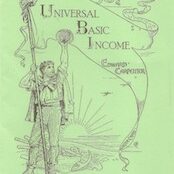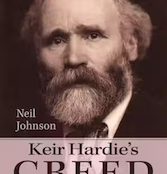As the regeneration baton is passed from Whitehall to local authorities, ANDY HANSFORD calls for the people of our blighted neighbourhoods to be given real control.
Four years’ work by the government’s Social Exclusion Unit (SEU) have resulted in a practical strategy for neighbourhood renewal. It is challenging stuff, which might transform the life chances of people living in poor neighbourhoods.
Over the past 25 years, Britain’s poorest neighbourhoods suffered massive decline. The SEU, encouragingly, appears to want to face life as it is lived on estates like mine in Manchester’s inner city. It asked the tricky questions and brought in some of the best information and analysis in the country.
Everyone and their dog fed in to the process: homelessness agencies, think-tanks, churches, the Urban Task Force, councils, the cooperative movement, housing associations, and single-issue campaign groups.
The government’s 105 commitments for deprived neighbourhoods are ‘joined-up’: health, housing, environment, skills, unemployment… The SEU’s action plan puts them all in one place, showing how mainstream services should work to combat social exclusion.
But, most surprising to those who lived in poor neighbourhoods through years of Tory gimmicks and cosmetic changes, is the ‘bottom-up’ slant. Most past strategies have focused on buildings and housing: this focuses on people.
Tony Blair’s foreword explains one reason the SEU’s approach is different: it “puts in place new ideas… for empowering residents and getting public, private and voluntary organisations to work in partnership”. This echoes his critique, in a previous SEU publication, of failed regeneration: “Too much has been imposed from above, when experience shows that success depends on communities themselves having the power and taking the responsibility to make things better.”
Co-ops feature among the report’s examples of best practice but, sadly, their co-operative nature is hidden. Cambridge CDA, and Homes for Change/Work for Change in Hulme, are tucked away in Annex F. As for Salford’s Apple Tree Court, this document hides the fact that this is a tenant managed co-op.
Trick
In the SEU’s first publication the same trick was pulled: the authors highlighted Coin Street’s festival, across the Thames from Westminster, but didn’t mention that all its residents live in housing coops set up by Coin Street Community Builders, the community group responsible for developing the site. Are co-ops a bit too bottom-up for civil servants?
The fact is that genuinely community-based, democratic organisations are far and away better at regenerating neighbourhoods and improving their people’s life chances. Co-operative development agencies and other co-op support organisations (CSOs) are, pound for pound, the best for getting ghetto economies back on their feet, being able to support housing, credit, job creation, and services for the community.
Community development trusts vary in scope and scale as well as in results, but the best, like Coin Street, are unbeatable. Community-based housing associations in Scotland do their thing in unique style and to excellent standards; in England and Wales, housing coops are the equivalent super-performing landlords. But co-ops are hedged in by restrictions, unable to combine or interact, unlike the semi-corporate ‘voluntary’ sector: housing associations can also do regeneration and job creation, while state and private land developers can do retail, housing for rent, or whatever is needed.
If the government really trusted people in tough neighbourhoods to sort themselves out, it would put them firmly in the driving seat. Why are tenants not trusted to do what the local notables, the great and the good are: to run the estates? If the answers come from the bottom up, why are associations still governed by Lords, Ladies, and former cabinet ministers’ wives? Can we hope to energise communities behind bodies which make the House of Lords look like the Paris Commune?
Bottom-up
As for housing, so for community renewal. Community development trusts work wonders if they are genuinely democratic, capture the enthusiasm of local people, and have real power – and here there is no alternative to commonly owned assets. The co-operative answer is, look at what can be done in Liverpool, in Glasgow, at Coin Street, in North Kensington, with a patch of land, some capital, the best people-friendly expert advice (as from CSOs) and a green light.
If Tony Blair believes that bottom-up regeneration depends on putting power in the hands of local people to collectively solve local problems, then this must mean having assets in common ownership and under democratic control. This means land and buildings as the bedrock for community enterprise based on sustainable, independent income to pump-prime other projects.
It means enabling democratic bodies which have won credibility among their community for one activity (say, housing, or rehabilitation of derelict buildings, or community services) to use that success to wider effect. It means allowing these resource-poor organisations to achieve what the asset-rich housing associations are being encouraged to do.
It must mean insisting that all bodies on which the community depends for renewal, are at least 50 per cent controlled by local residents (for landlords, by their local tenants). This would include elections for the boards and committees of the new local strategic partnerships – and for community development trusts and the housing associations involved in each neighbourhood.
The Co-operative Party must keep a close eye, as the baton is now passed from Whitehall to the local authorities, on how they set up local strategic partnerships. The people of our blighted neighbourhoods need real control this time: land and freedom!
Go to www.cabinet-office.gov.uk/seu for further details of the SEU’s report: A new commitment to neighbourhood renewal: national strategy action plan, January 2001. A version of this article originally appeared in the Co-operative Party’s magazine, Commonweal, now called New Mutualism.



22 October 2010
[…] for mutualising the public sector. Matthew Brown spoke to NEF’s executive director, Ed Mayo. All together now As the regeneration baton is passed from Whitehall to local authorities, Andy Hansford calls for […]